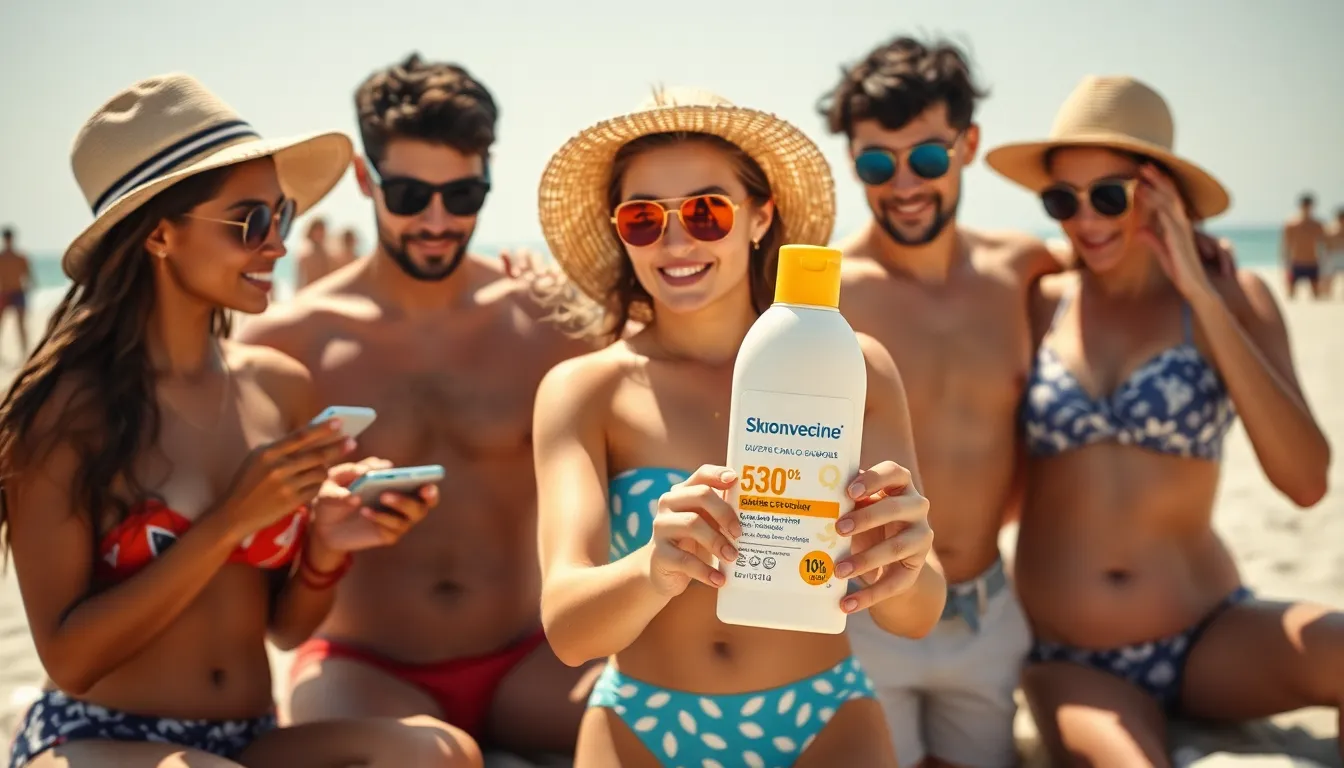Table of Contents
ToggleWhen it comes to slathering on sunscreen, most folks think they’re just protecting their skin from sunburn. But what if the secret ingredient to a flawless summer glow lies in the mysterious world of mitacium dizovid? This little-known compound could be the unsung hero of your sun protection routine.
You might be wondering: how much of this magical potion do you really need? Spoiler alert: it’s not a “more is better” situation. Finding the right amount is like trying to perfect the recipe for grandma’s famous cookies—too much and you might end up with a gooey mess. So buckle up as we dive into the science of sunscreen and uncover the perfect dose of mitacium dizovid to keep your skin safe and radiant all summer long.
Understanding Mitacium Dizovid
Mitacium dizovid plays a critical role in sunscreen formulations. Considering its unique properties contributes to its growing popularity.
Definition and Purpose
Mitacium dizovid is an innovative compound known for its skin-protective qualities. This ingredient functions as both a sun blocker and antioxidant agent. Its inclusion in sunscreen helps shield skin from harmful UV rays while promoting healthier skin. Specific chemical interactions allow it to absorb and deflect sunlight effectively, ensuring optimal protection during sun exposure.
Benefits in Sunscreen Formulations
Incorporating mitacium dizovid enhances sunscreen effectiveness. This compound improves skin hydration, promoting a smoother appearance. It also provides a lightweight feel, making it comfortable for daily wear. Some studies indicate that mitacium dizovid reduces skin irritation caused by sun exposure. Formulations that include this ingredient offer additional anti-aging benefits, contributing to a youthful look alongside sun protection. Overall, using sunscreen with mitacium dizovid delivers comprehensive skincare along with effective sun defense.
Recommended Dosage

Determining the right amount of mitacium dizovid in sunscreen ensures optimal skin protection and benefits. The dosage can vary based on several influencing factors.
Factors Influencing Dosage
Skin type plays a significant role in dosage recommendations. Sensitive skin might require lower amounts to minimize irritation. Seasonal changes also affect the amount needed; hotter months may call for more application due to increased sun exposure. Activity level impacts how much protection is necessary; swimming or exercising outdoors typically demands a higher dosage. Lastly, the formulation of the sunscreen itself contributes to the efficacy; some formulations may require more mitacium dizovid for the desired protective effects.
General Guidelines for Use
Experts suggest using about 1-2 grams of sunscreen for full face coverage, which translates to approximately one teaspoon. For broader areas, like the arms or legs, applying a generous layer is crucial, ensuring even distribution across the skin. Reapplication every two hours enhances effectiveness, especially after sweating or swimming. Selecting sunscreens specifically formulated with mitacium dizovid supports sustained protection throughout the day. Checking product labels ensures users apply the correct dosage aligned with their skin needs.
Application Tips
Applying sunscreen correctly maximizes the benefits of mitacium dizovid. Understanding proper techniques ensures even coverage and optimal protection against UV rays.
Proper Application Techniques
Start with clean, dry skin to promote effective absorption. Make sure to dispense 1-2 grams of sunscreen for full face coverage. Use your fingers to gently massage the product onto the skin, making sure to cover all exposed areas. Layer sunscreen onto arms, legs, and any other body parts needing protection. Ensure a uniform application to prevent missing spots. Pay attention to high-exposure areas like the nose and ears. Allow some time for the sunscreen to absorb before heading outside for maximum effectiveness.
Frequency of Reapplication
Reapplying sunscreen routinely plays a key role in maintaining protection from UV rays. Experts recommend every two hours as a general guideline. Increase frequency after activities such as swimming or sweating. Additional coats ensure that skin remains shielded throughout the day. Check product labels for specific instructions related to mitacium dizovid formulations. Regular reapplication helps maintain hydration and skin health while enjoying outdoor activities.
Safety Considerations
Safety is paramount when using products containing mitacium dizovid. Understanding potential side effects ensures informed choices for skincare.
Potential Side Effects
Some users might experience minor irritation when using mitacium dizovid. It’s essential to monitor skin response, especially with first-time applications. Factors like skin sensitivity and product formulation play a role in reactions. Mild redness or stinging can occur, but these symptoms often subside shortly after application. Discontinuing use upon noticing severe irritation is crucial. Consulting a dermatologist for persistent issues provides tailored guidance.
Allergic Reactions and Sensitivities
Allergic reactions to mitacium dizovid, while rare, can happen. Individuals with known sensitivities to similar compounds should proceed cautiously. Symptoms might include hives, swelling, or severe irritation. Patch testing before full application can help identify potential allergies. Users must report any adverse symptoms they encounter. Awareness of personal skin conditions enhances safety when integrating new ingredients into skincare routines.
Mitacium dizovid is a game-changer in sunscreen formulations. Its unique properties not only protect against harmful UV rays but also enhance skin health and hydration. Finding the right dosage is essential for maximizing these benefits.
Users should aim for about 1-2 grams for full face coverage and ensure proper application for even distribution. Regular reapplication is crucial to maintain protection throughout the day. By choosing sunscreens specifically formulated with mitacium dizovid and following application guidelines, individuals can enjoy the summer sun while keeping their skin safe and radiant.







